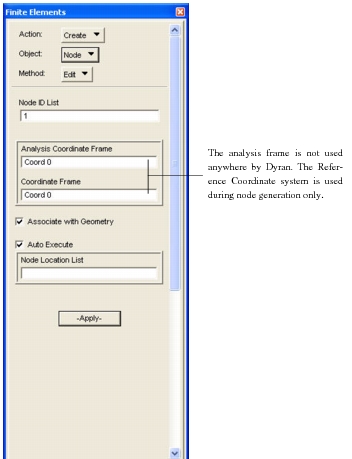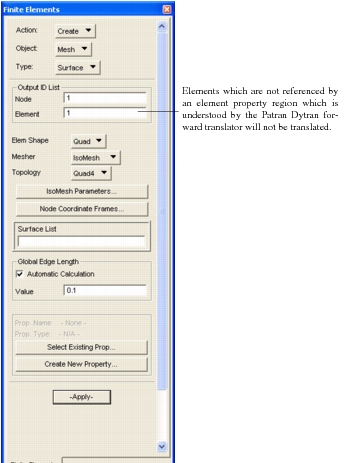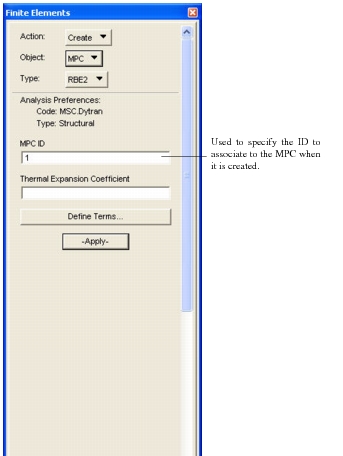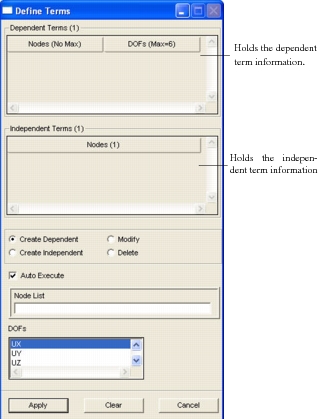XXXXXXXXXXXXXXXXXXXXXXXXXXXXXXXXXXXXXXXXXXXXXXXXXXXXXXXXXXXXXXXXXXXXXXXXXXXXXXXXXXXXXXXXXXXXXXXXXXXXXXXXXXXXXXXXXXXXXXXXXXXXXXXXXXXXXXXXXXXXXXXXXXXXXXXX''"> Finite Elements
Finite Elements in Patran allows the definition of basic finite element construction. Created under Finite Elements are the nodes, element topology and multi-point constraints.
For more information on how to create finite element meshes, see
Mesh Seed and Mesh Forms (p. 25) in the Reference Manual - Part III.
Nodes
Nodes in Patran will generate unique GRID Bulk Data entries. Nodes can be created either directly using the Node object, or indirectly using the Mesh object.
Elements
Finite Elements in Patran assigns element connectivity, such as Quad/4, for standard finite elements. The type of Dytran element created is not determined until the element properties are assigned. See
the
Element Properties Form for details concerning the Dytran element types. Elements can be created either discretely using the Element object or indirectly using the Mesh object.
Multi-Point Constraints
Multi-point constraints (MPCs) can also be created from the Finite Elements menu. These elements define a rigorous behavior between several specified nodes. The forms for creating MPCs are found by selecting MPC as the Object on the Finite Elements form. The full functionality of the MPC forms are defined in
Create Action (Mesh) (p. 11) in the Reference Manual - Part III.
MPC Types
To create an MPC, first select the type of MPC to be created from the option menu. The MPC types that appear in the option menu are dependent on the current settings of the Analysis Code and Analysis Type preferences. The following table describes the MPC types which are supported for Dytran.
MPC Type | Analysis Type | Description |
RBE2 | Structural | Creates a constraint equation between one degree of freedom of one node and selected degrees of freedom of other nodes. |
Degrees-of-Freedom
Whenever a list of degrees-of-freedom is expected for an MPC term, a listbox containing the valid degrees-of-freedom is displayed on the form. A degree-of-freedom is valid if:
1. It is valid for the current Analysis Code Preference.
2. It is valid for the current Analysis Type Preference.
3. It is valid for the selected MPC type.
In most cases, all degrees-of-freedom, which are valid for the current Analysis Code and Analysis Type preferences, are valid for the MPC type.The following degrees-of-freedom are supported for the various analysis types:
Degree-of-freedom | Analysis Type |
UX UY UZ RX RY RZ | Structural Structural Structural Structural Structural Structural |
|
|
|
|
|
Note: | Care must be taken to make sure that a degree-of-freedom that is selected for an MPC actually exists at the nodes. For example, a node that is attached only to solid structural elements will not have any rotational degrees-of-freedom. However, Patran will allow you to select rotational degrees-of-freedom at this node when defining an MPC. |
RBE2 MPCs
This subordinate MPC form appears when the Define Terms button is selected on the Finite Elements form. This form is used to create a RBE2 Bulk Data entry.





